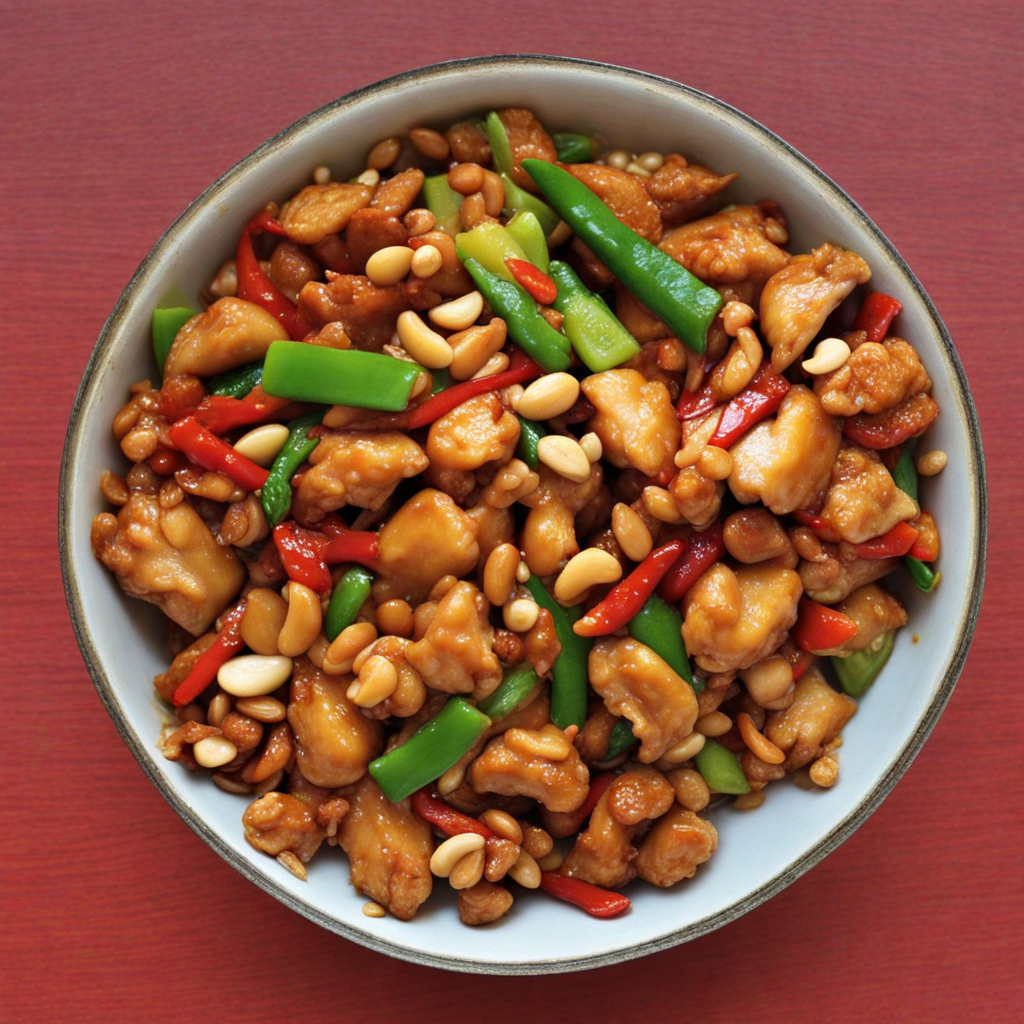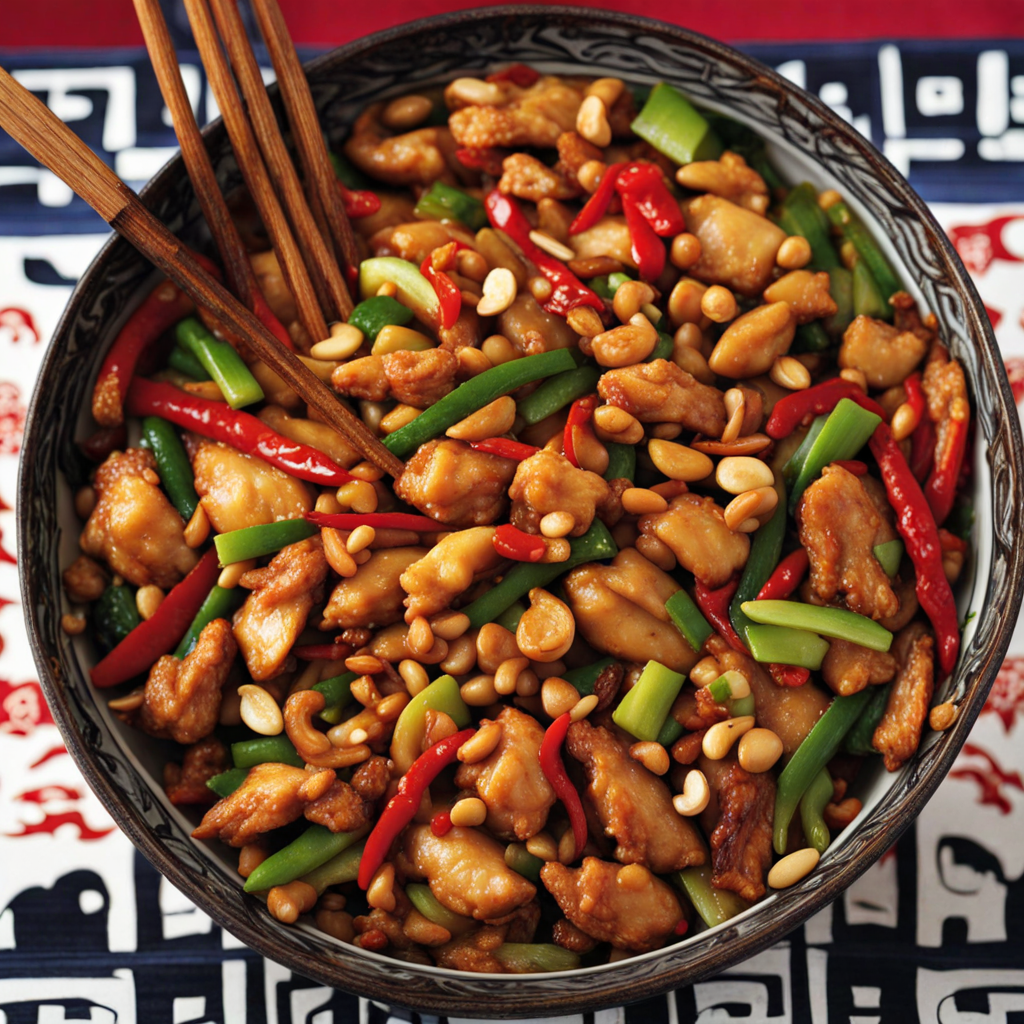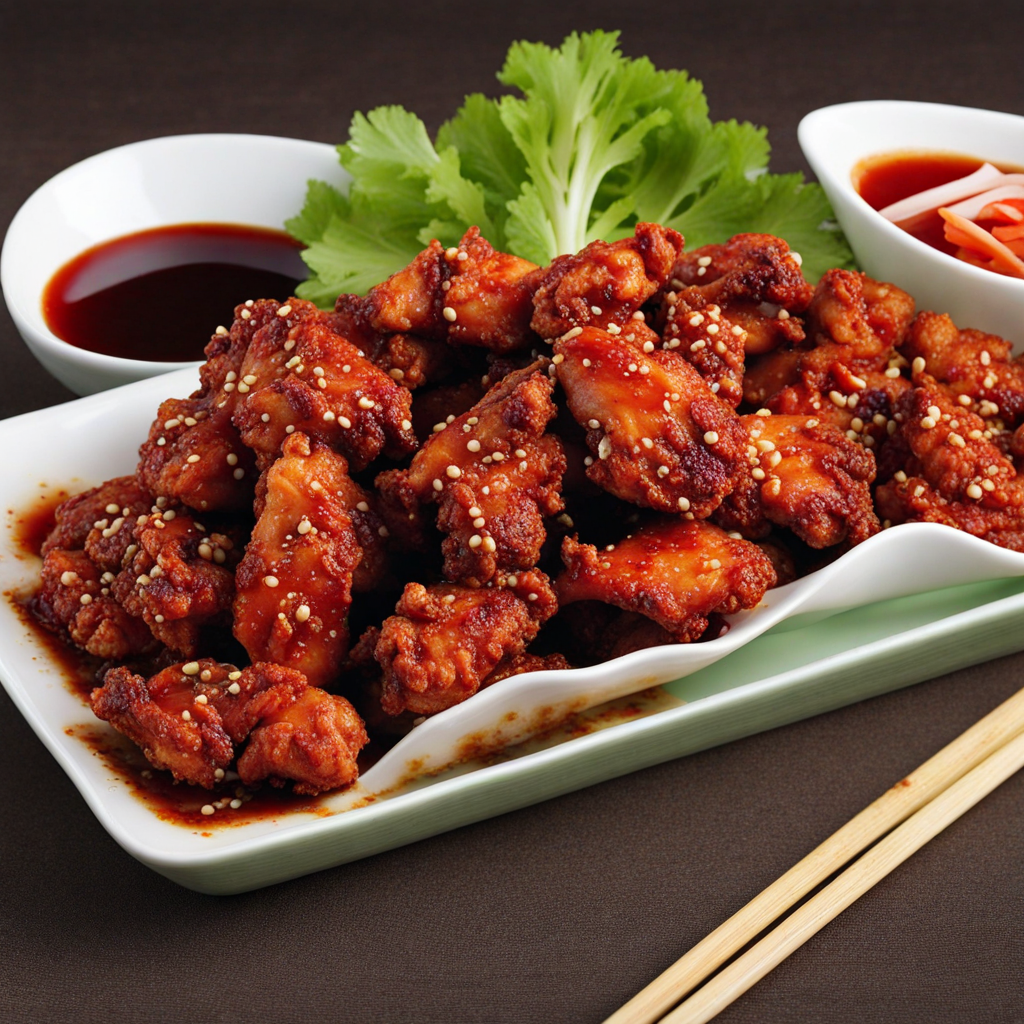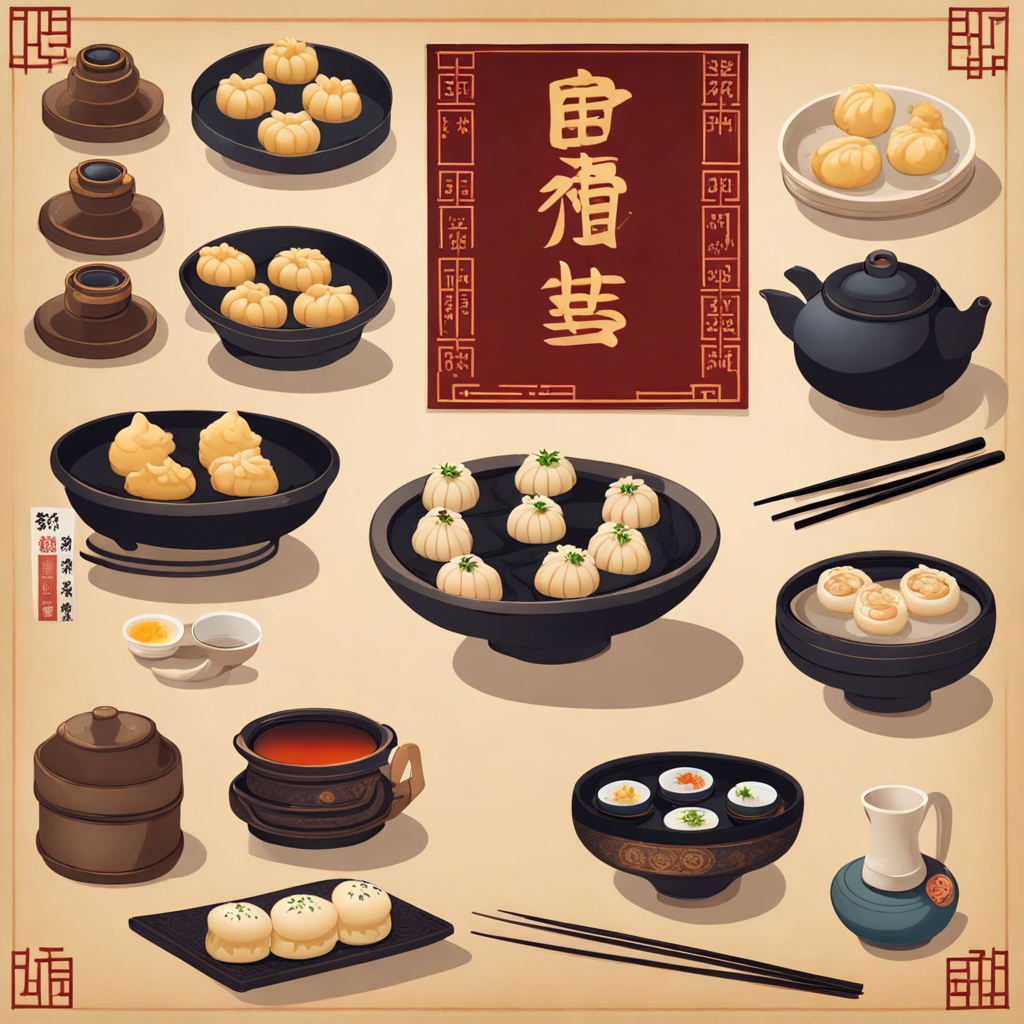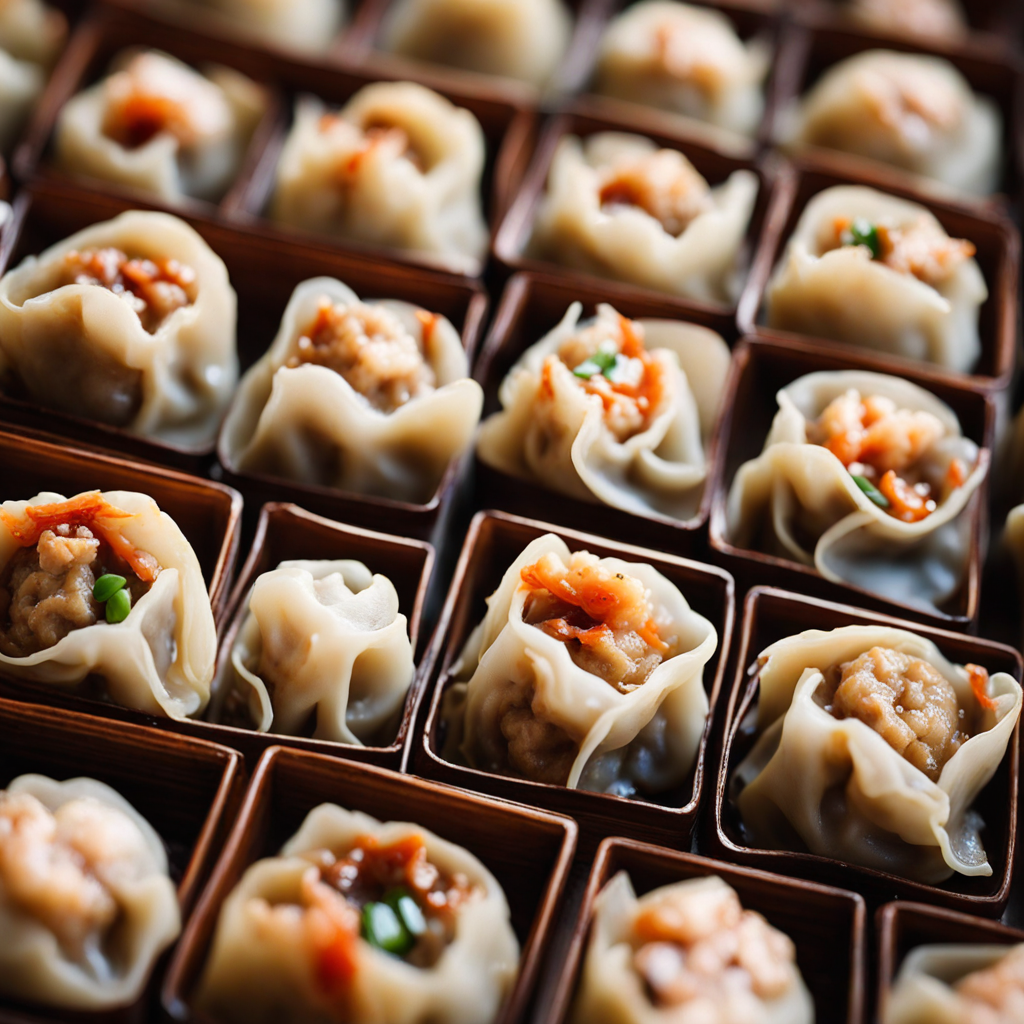Kung Pao Chicken
Kung Pao Chicken is a beloved dish hailing from the Sichuan province of China, renowned for its vibrant flavors and delightful textures. At its core, this dish features tender, bite-sized pieces of chicken that are marinated and stir-fried to perfection. The chicken is typically combined with a colorful array of ingredients, including crunchy bell peppers, scallions, and roasted peanuts, creating a symphony of flavors and textures that excite the palate. The marriage of these components is accentuated by a rich, savory sauce made from soy sauce, rice vinegar, and a touch of sugar, balancing saltiness with a hint of sweetness that is characteristic of Chinese cuisine. One of the defining features of Kung Pao Chicken is its unique use of Sichuan peppercorns, which impart a distinctive numbing sensation that complements the dish's heat. The inclusion of dried red chilies adds a fiery kick, making each bite a delightful adventure for those who enjoy a bit of spice. The vibrant colors and enticing aroma of the dish make it visually appealing, while the combination of flavors—from the nutty crunch of peanuts to the tender chicken and the aromatic sauce—creates a well-rounded culinary experience that lingers in your memory. Traditionally served over steamed rice, Kung Pao Chicken is not just a meal; it's a celebration of Chinese culinary artistry. Whether you are dining out at a Chinese restaurant or trying your hand at making it at home, this dish invites you to explore the rich tapestry of flavors that Chinese cuisine has to offer. Each bite is an invitation to journey through the bold and intricate world of Sichuan flavors, making Kung Pao Chicken a must-try for anyone looking to discover a new and exciting taste in their culinary adventures.
How It Became This Dish
The History of Gong Bao Ji Ding (宫保鸡丁) Gong Bao Ji Ding, often translated as "Kung Pao Chicken," is a beloved dish that has traversed the globe, captivating palates with its tantalizing blend of flavors and textures. This stir-fried chicken dish, characterized by its combination of diced chicken, peanuts, and vegetables in a savory, slightly spicy sauce, has a rich history that intertwines with the cultural fabric of China. Origins The origins of Gong Bao Ji Ding can be traced back to the late Qing Dynasty in the 19th century, specifically linked to a historical figure known as Ding Baozhen (丁宝桢). Ding was a high-ranking official in the Sichuan province and was known for his culinary preferences. It is said that the dish was created in his honor, with "Gong Bao" (宫保) referring to his title, which roughly translates to "Palace Guardian." The term "Ji Ding" (鸡丁) simply means "diced chicken." The dish first emerged from the region of Sichuan, renowned for its bold flavors and liberal use of spices, particularly Sichuan peppercorns, which impart a unique numbing sensation. The combination of chicken, peanuts, and a sauce made from soy sauce, vinegar, and sugar reflects the culinary principles of balance and harmony that are central to Chinese cooking. Cultural Significance Gong Bao Ji Ding is more than just a dish; it is emblematic of Chinese culinary traditions and the evolution of regional cuisines. In Sichuan cuisine, the dish represents the practice of using locally available ingredients to create flavorful meals that are both satisfying and nourishing. The use of peanuts in Gong Bao Ji Ding is also culturally significant. Peanuts, often associated with prosperity and good fortune in Chinese culture, add a delightful crunch that contrasts with the tender chicken. The dish's balance of flavors—sweet, salty, and spicy—resonates with the Chinese philosophical concept of yin and yang, which seeks to harmonize contrasting elements. As Chinese communities began to migrate around the world, they took their culinary traditions with them, and Gong Bao Ji Ding became one of the dishes that found its way into Chinese restaurants abroad. In the United States, for example, it underwent a transformation, often being adapted to suit local tastes, resulting in variations that might use less spice or incorporate additional vegetables. Despite these adaptations, the core essence of the dish has largely remained intact. Development Over Time The development of Gong Bao Ji Ding reflects broader trends in Chinese cuisine and globalization. While the dish was originally prepared using traditional methods, the advent of modern cooking techniques and the availability of new ingredients have transformed its preparation. In the early 20th century, Gong Bao Ji Ding began to gain popularity beyond Sichuan, especially in cities like Beijing. Cooks in Beijing adapted the dish, creating their versions that included different vegetables, such as bell peppers and carrots, and often using less chili oil to cater to the milder palates of the northern regions. This adaptability speaks to the nature of Chinese cuisine, which emphasizes regional differences and the importance of seasonal ingredients. By the 1980s, as China opened its doors to the world, Gong Bao Ji Ding became a symbol of the country's culinary prowess on the international stage. It was featured in Chinese restaurants globally, becoming a staple on menus and often one of the first dishes that non-Chinese diners would try. This period marked the transition of Gong Bao Ji Ding from a regional specialty to an internationally recognized dish. The dish's popularity has also been bolstered by its appearances in popular culture. Films and television shows have featured Gong Bao Ji Ding, introducing it to wider audiences and further cementing its status as a quintessential Chinese dish. Additionally, the rise of food bloggers and social media has allowed for the exchange of recipes and variations, leading to an even broader appreciation of the dish. Modern Variations and Popularity In contemporary cuisine, Gong Bao Ji Ding continues to evolve. Chefs around the world experiment with the dish, incorporating diverse ingredients such as tofu or different types of protein, like shrimp or beef, to cater to various dietary preferences, including vegetarian and gluten-free options. In China, the dish remains a staple in both home cooking and restaurants, often served during family gatherings and celebrations. It reflects the importance of communal dining in Chinese culture, where sharing food is a way to strengthen bonds and create memories. The dish has also enjoyed a resurgence with the rise of interest in authentic Sichuan cuisine, driven by the global popularity of spicy food among younger generations. Cooking classes and food festivals dedicated to Sichuan cuisine often highlight Gong Bao Ji Ding, showcasing its versatility and timeless appeal. Conclusion Gong Bao Ji Ding is a dish that encapsulates the rich culinary history of China, representing not only the flavors of Sichuan but also the cultural significance of food as a means of connection and expression. Its evolution from a regional specialty to an internationally acclaimed dish illustrates the dynamic nature of cuisine and the ability of food to transcend geographical boundaries. As it continues to adapt and inspire, Gong Bao Ji Ding remains a testament to the enduring legacy of traditional Chinese cooking, inviting food lovers to savor its harmonious blend of flavors, rooted in a history that dates back more than a century. Whether enjoyed in a bustling restaurant in Chengdu or a family kitchen in New York, Gong Bao Ji Ding is sure to remain a cherished dish for generations to come.
You may like
Discover local flavors from China


